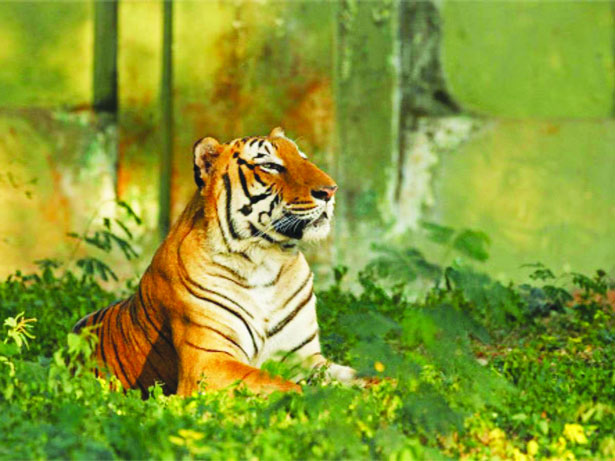Tiger numbers are up but with one in three big cats living outside reserves, the man-animal conflict is a bigger threat
Such was the crisis of tigers in 2006, when their numbers fell to a paltry 1,411, that any increase since then has been a cause for celebration. So when we had a healthy count of 2,967 in 2018, Prime Minister Narendra Modi took it upon himself to announce the census findings. The Environment Ministry’s latest report, Status of Tigers, Co-predators and Prey in India, confirms this steady trend, showing a six per cent rise in India’s tiger population from 2006 to 2018. From just nine tiger reserves when Project Tiger started in 1973, the country has 50 today. However, the devil is in the detail and while the overall numbers may be good, the uneven distribution pattern of the big cat is warning enough that there could be a future crisis if we don’t address gaps now. The report says that one in every three tigers lives outside reserves compared to one in every four in 2014, or 35 per cent live outside park limits. This means that the big cat’s territoriality and roaming range are being compromised because of shrinkage of habitat and if it is straying, it is exposing itself that much more to conflict with humans as well as members of its own species. The second problem is that of cramping and saturation at certain reserves that would need migratory conduits linking them to other habitats. Uttarakhand’s Corbett Tiger Reserve has reported the highest tiger density with 14 tigers per 100 sq km, followed by Kaziranga, Nagarhole and Orang parks. This means that even if forest limits cannot be extended or linked, some provision for open grasslands would have to be made around them so that they can support herbivores, which form the prey base of the tigers. Corbett now has the highest tiger numbers with 231 inside the reserve and 266 using it. It is followed by Nagarhole tiger reserve with 127 tigers, Bandipur with 126 tigers and Bandhavgarh and Kaziranga with 104 tigers each. These reserves are holding out because the prey base is still evenly distributed across ranges, allowing the species to thrive. At the same time, some tiger reserves like Buxa and Palamau have lost their felines simply because of human transit corridors, encroachment, proximity to development projects and insufficient prey base. Of course, one may argue that tigers can be re-introduced to the empty reserves from parks that have them in excess but as Sariska has shown, that takes time and immense patience. Besides, the tigers need to be sourced from the nearest forest simply because much of their survival depends on the genetic pool they come from and that increases the chance of their adaptability. Apart from peripheral villagers, a new tiger also has to deal with resident smaller cats or in the total absence of its kind, reconcile to being a lone ranger and adjust with other relocated companions. Most worryingly, the report lists poaching at an all-time high, India recording the highest number of cases in 15 years in the first quarter of 2016. Bones, claws, teeth and skin continue to be a draw in illegal markets.
While tiger numbers have increased, its habitats have been dwindling due to human encroachment, fast-track infrastructure projects and truncated wildlife corridors that restrict it from moving freely to other forests and exploring new ranges. This would automatically reduce cramping and help it spread out in a healthy manner. The report says tigers have lost 90 per cent of their natural habitat and the man-animal conflict has never been worse, therefore. Be it the killing of Avni last year, villagers beating up strayers or the confused tiger hitting back with a counter-charge, the headlines point to a dangerous trend of overpopulation not being commensurate with increase in prey-rich forest zones. The Wildlife Trust of India’s conflict database for Uttar Pradesh records 63 cases of attacks on humans by tigers from 2014 to February 2019, an average of 10.8 cases per year. This marks a dramatic increase from an average of 5.6 attacks on humans per year between 2000 and 2013. The tiger will stray into human settlements when its food chain is affected and villagers cannot be expected to prioritise the conservation economy when the lives of their own and the livestock are at stake. So awareness of tigers should now also include equal knowledge about its ecology and behaviour and the need to provide alternative ranges. Recent examples have shown how some railway underpasses to facilitate wildlife transit are working as both the elephant and tiger are adapting to changed migration routes. There are still viable tracts of pristine forests that were once contiguous and can be turned into reserves by relocating animals from overpopulated stretches. But forests are a State subject and an inter-state agreement on shared corridors needs to be worked out if translocation is to succeed. The tiger sits on top of the food chain in the forest and by saving it, we are saving our biosphere.


























